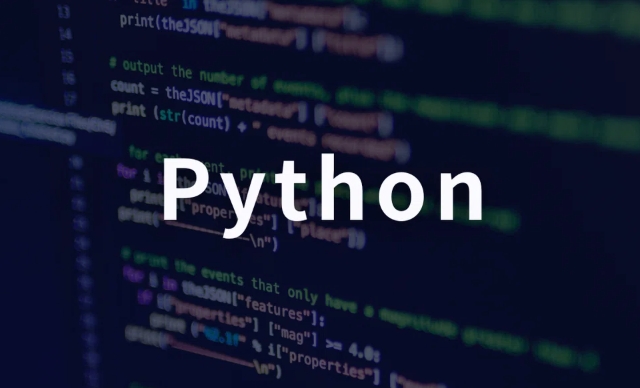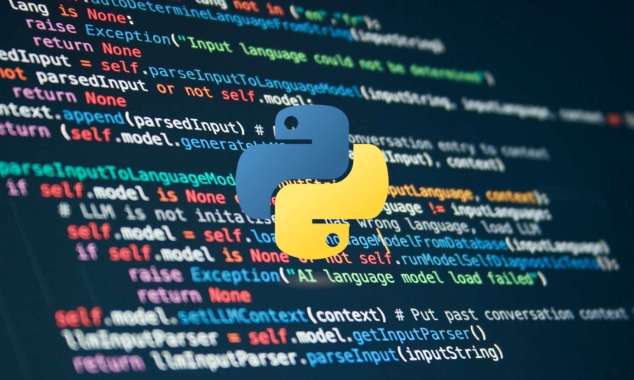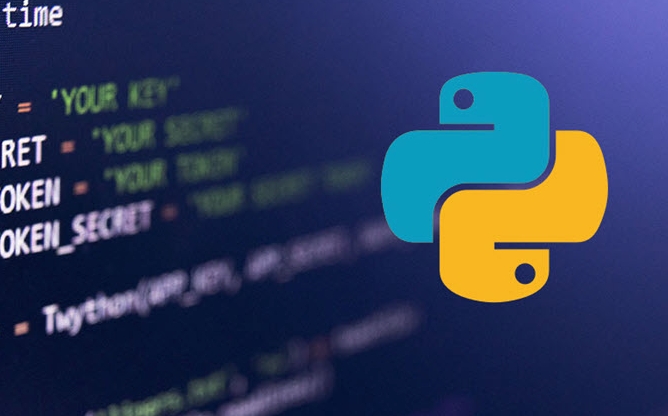The key to writing Python's if else statements is to understand the logical structure and details. 1. The infrastructure is to execute a piece of code if conditions are established, otherwise the else part is executed, else is optional; 2. Multi-condition judgment is implemented using elif, and it is executed sequentially and stopped once it is met; 3. Nested if is used for further subdivision judgment, it is recommended not exceeding two layers; 4. In simple scenarios, ternary expressions can be used instead of simple if else. Only by paying attention to indentation, conditional order and logical integrity can we write clear and stable judgment codes.

It is actually not difficult to write if else statements in Python. The key is how to use them clearly and practically. When novices first start learning, they often tend to confuse the order or indentation format of conditional judgment, resulting in the program not being able to produce the expected results. This article uses several common examples to talk about how to use if else correctly and some small details that need to be paid attention to.

Infrastructure: if and else
The simplest if else structure is to determine whether a condition is true. If it is true, execute the code in the if, otherwise execute the else part. for example:
age = 16
if age >= 18:
print("You are already an adult")
else:
print("You are underage")This structure is suitable for scenarios where there are only two situations that need to be handled. Note that else is optional . Sometimes you only need to do something when the condition is met. If it is not met, don't care about it.

Multi-condition judgment: the role of elif
When you want to judge multiple different situations, you need to use elif (equivalent to else if). For example, judging grades:
score = 75
if score >= 90:
print("A")
elif score >= 80:
print("B")
elif score >= 70:
print("C")
else:
print("D")A few points to note:

- The conditions are judged from top to bottom. Once a certain item is established, you will not read the subsequent ones.
- Else is executed only when all conditions are not met.
- The order is very important . For example, put
score >= 70in the first judgment, and the subsequent ones may not be executed.
Nested if: judge again in judgment
Sometimes you need to further subdivided judgment based on the results of a certain judgment. At this time, you can use nested if:
age = 20
has_license = True
if age >= 18:
if has_license:
print("You can drive legally")
else:
print("You need to take the driver's license")
else:
print("You can't drive yet")Don’t have too deep nesting levels, usually two layers are enough. If it is too complicated, it is recommended to split the logic or encapsulate it with functions.
Concise writing: ternary expressions replace simple if else
For judgments that only one or two lines of operations, you can use ternary expressions to simplify the code:
x = 10 result = "big" if x > 5 else "small" print(result)
This writing method is suitable for simple assignment or return value operations and is not recommended to make complex logical judgments.
Basically that's it. If else looks simple, but using it well does not just write the grammar right. The key is to clear logic and comprehensive coverage of conditions. Practice a few more examples and you can slowly write a more stable judgment structure.
The above is the detailed content of python if else example. For more information, please follow other related articles on the PHP Chinese website!

Hot AI Tools

Undress AI Tool
Undress images for free

Undresser.AI Undress
AI-powered app for creating realistic nude photos

AI Clothes Remover
Online AI tool for removing clothes from photos.

Clothoff.io
AI clothes remover

Video Face Swap
Swap faces in any video effortlessly with our completely free AI face swap tool!

Hot Article

Hot Tools

Notepad++7.3.1
Easy-to-use and free code editor

SublimeText3 Chinese version
Chinese version, very easy to use

Zend Studio 13.0.1
Powerful PHP integrated development environment

Dreamweaver CS6
Visual web development tools

SublimeText3 Mac version
God-level code editing software (SublimeText3)
 How to handle transactions in Java with JDBC?
Aug 02, 2025 pm 12:29 PM
How to handle transactions in Java with JDBC?
Aug 02, 2025 pm 12:29 PM
To correctly handle JDBC transactions, you must first turn off the automatic commit mode, then perform multiple operations, and finally commit or rollback according to the results; 1. Call conn.setAutoCommit(false) to start the transaction; 2. Execute multiple SQL operations, such as INSERT and UPDATE; 3. Call conn.commit() if all operations are successful, and call conn.rollback() if an exception occurs to ensure data consistency; at the same time, try-with-resources should be used to manage resources, properly handle exceptions and close connections to avoid connection leakage; in addition, it is recommended to use connection pools and set save points to achieve partial rollback, and keep transactions as short as possible to improve performance.
 Python for Data Engineering ETL
Aug 02, 2025 am 08:48 AM
Python for Data Engineering ETL
Aug 02, 2025 am 08:48 AM
Python is an efficient tool to implement ETL processes. 1. Data extraction: Data can be extracted from databases, APIs, files and other sources through pandas, sqlalchemy, requests and other libraries; 2. Data conversion: Use pandas for cleaning, type conversion, association, aggregation and other operations to ensure data quality and optimize performance; 3. Data loading: Use pandas' to_sql method or cloud platform SDK to write data to the target system, pay attention to writing methods and batch processing; 4. Tool recommendations: Airflow, Dagster, Prefect are used for process scheduling and management, combining log alarms and virtual environments to improve stability and maintainability.
 How to work with Calendar in Java?
Aug 02, 2025 am 02:38 AM
How to work with Calendar in Java?
Aug 02, 2025 am 02:38 AM
Use classes in the java.time package to replace the old Date and Calendar classes; 2. Get the current date and time through LocalDate, LocalDateTime and LocalTime; 3. Create a specific date and time using the of() method; 4. Use the plus/minus method to immutably increase and decrease the time; 5. Use ZonedDateTime and ZoneId to process the time zone; 6. Format and parse date strings through DateTimeFormatter; 7. Use Instant to be compatible with the old date types when necessary; date processing in modern Java should give priority to using java.timeAPI, which provides clear, immutable and linear
 Comparing Java Frameworks: Spring Boot vs Quarkus vs Micronaut
Aug 04, 2025 pm 12:48 PM
Comparing Java Frameworks: Spring Boot vs Quarkus vs Micronaut
Aug 04, 2025 pm 12:48 PM
Pre-formanceTartuptimeMoryusage, Quarkusandmicronautleadduetocompile-Timeprocessingandgraalvsupport, Withquarkusoftenperforminglightbetterine ServerLess scenarios.2.Thyvelopecosyste,
 How does garbage collection work in Java?
Aug 02, 2025 pm 01:55 PM
How does garbage collection work in Java?
Aug 02, 2025 pm 01:55 PM
Java's garbage collection (GC) is a mechanism that automatically manages memory, which reduces the risk of memory leakage by reclaiming unreachable objects. 1.GC judges the accessibility of the object from the root object (such as stack variables, active threads, static fields, etc.), and unreachable objects are marked as garbage. 2. Based on the mark-clearing algorithm, mark all reachable objects and clear unmarked objects. 3. Adopt a generational collection strategy: the new generation (Eden, S0, S1) frequently executes MinorGC; the elderly performs less but takes longer to perform MajorGC; Metaspace stores class metadata. 4. JVM provides a variety of GC devices: SerialGC is suitable for small applications; ParallelGC improves throughput; CMS reduces
 go by example defer statement explained
Aug 02, 2025 am 06:26 AM
go by example defer statement explained
Aug 02, 2025 am 06:26 AM
defer is used to perform specified operations before the function returns, such as cleaning resources; parameters are evaluated immediately when defer, and the functions are executed in the order of last-in-first-out (LIFO); 1. Multiple defers are executed in reverse order of declarations; 2. Commonly used for secure cleaning such as file closing; 3. The named return value can be modified; 4. It will be executed even if panic occurs, suitable for recovery; 5. Avoid abuse of defer in loops to prevent resource leakage; correct use can improve code security and readability.
 Comparing Java Build Tools: Maven vs. Gradle
Aug 03, 2025 pm 01:36 PM
Comparing Java Build Tools: Maven vs. Gradle
Aug 03, 2025 pm 01:36 PM
Gradleisthebetterchoiceformostnewprojectsduetoitssuperiorflexibility,performance,andmoderntoolingsupport.1.Gradle’sGroovy/KotlinDSLismoreconciseandexpressivethanMaven’sverboseXML.2.GradleoutperformsMaveninbuildspeedwithincrementalcompilation,buildcac
 How to use the observer pattern in Java?
Aug 02, 2025 am 11:52 AM
How to use the observer pattern in Java?
Aug 02, 2025 am 11:52 AM
The clear answer to this question is the recommendation to implement the observer pattern using a custom observer interface. 1. Although Java provides Observable and Observer, the former is a class and has been deprecated and lacks flexibility; 2. The modern recommended practice is to define a functional Observer interface, and the Subject maintains the Observer list and notify all observers when the state changes; 3. It can be used in combination with Lambda expressions to improve the simplicity and maintainability of the code; 4. For GUI or JavaBean scenarios, PropertyChangeListener can be used. Therefore, new projects should adopt a custom observer interface scheme, which is type-safe, easy to test and specializes in modern Java






